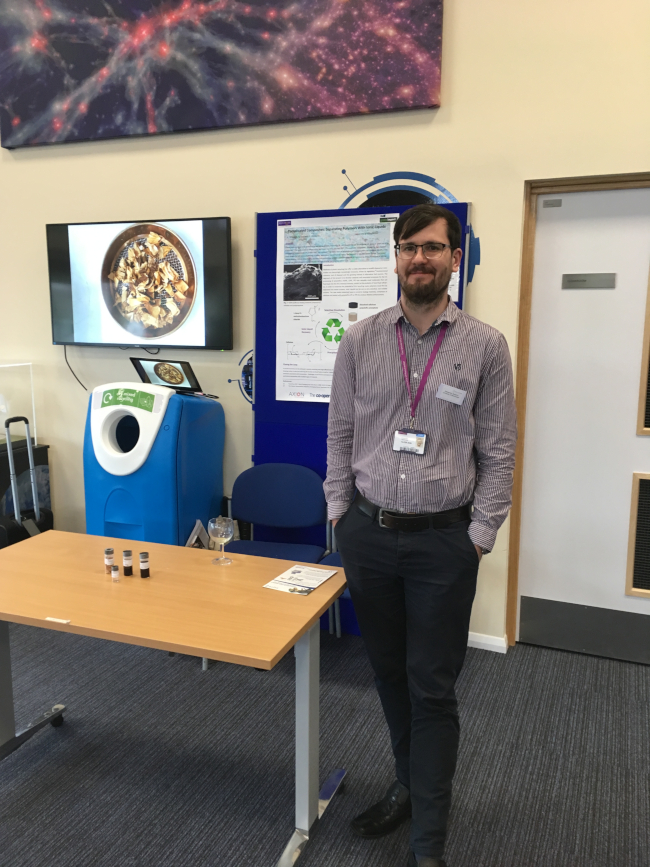
Consumer goods are often packaged with materials that are tricky to incorporate into a circular economy by conventional recycling techniques. Composite materials must be separated before they can be mechanically or chemically recycled, or biodegraded. Typically, this type of material currently goes to landfill unless it can be directly re-used, and may contaminate other waste streams if improperly disposed of. One such example is common commercial teabags, made mostly of easily degraded cellulose, but sealed with polyethylene or polypropylene to extend their shelf life, making them non-biodegradable. This demonstration shows how this material can be separated using ionic liquids to selectively dissolve the cellulose component, leaving behind the polyolefinic component that has potential value for recycling via catalytic degradation into chemical feedstocks. This is part of a wider project exploring heterogeneous catalysis of polyolefins, to keep them in a circular economy, as they represent a large and valuable section of the consumer market, but cannot be easily reprocessed by current technology and preserve the properties of this very useful class of materials.




